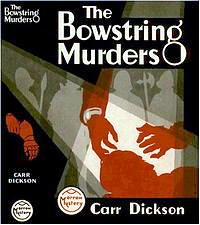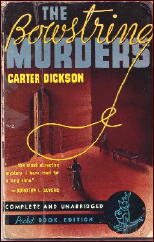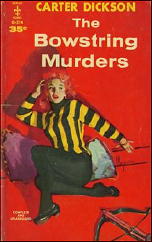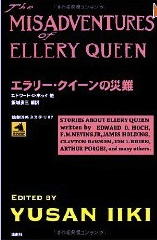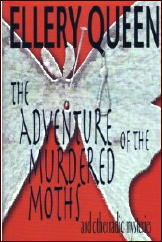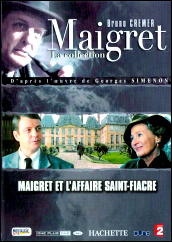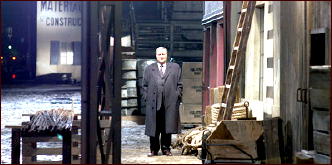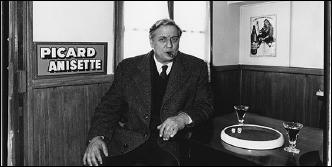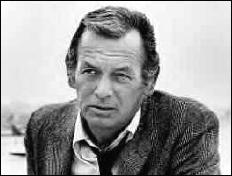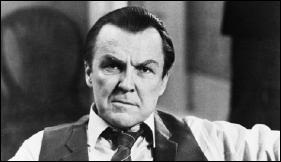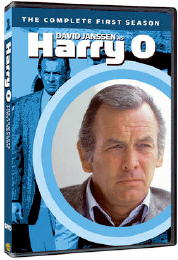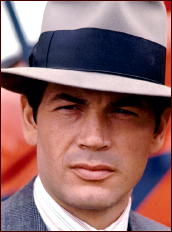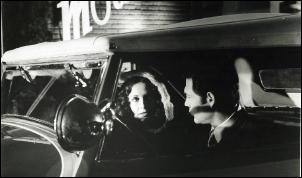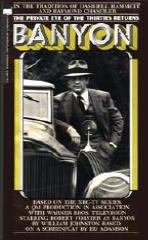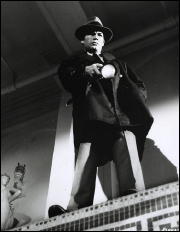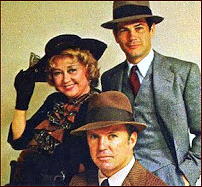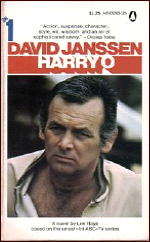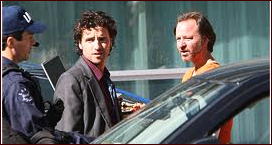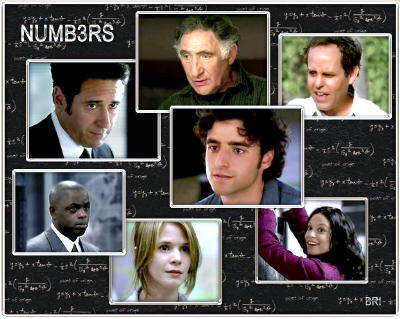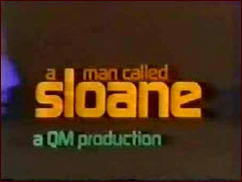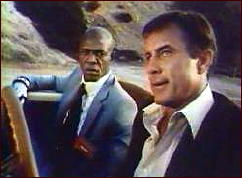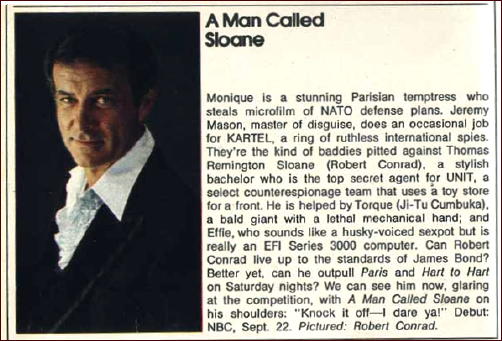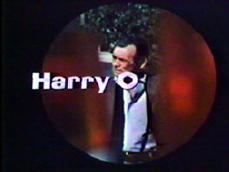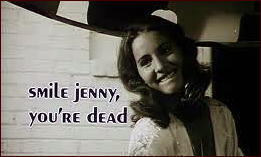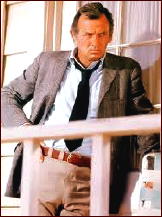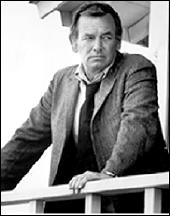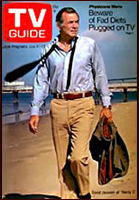Mon 13 Aug 2012
A TV Review by Michael Shonk: ANDY BARKER, P.I. (2007).
Posted by Steve under Reviews , TV Comedy , TV mysteries[12] Comments
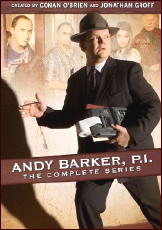
ANDY BARKER, P.I. NBC. Red Pulley Production. Conaco, NBC-Universal. Cast: Andy Richter as Andy Barker, Clea Lewis as Jenny Barker, Harve Presnell as Lew Staziak, Tony Hale as Simon, Marshall Manesh as Wally. Created by Conan O’Brien and Jonathan Groff. Music by Adam Cohen. Directed by Jason Ensler.
Episodes are available on DVD and downloading sites, as well as at Hulu.com where they can be watched for free.
While Barney Miller remains the greatest ever TV detective comedy, Andy Barker, P.I. may hold that title for TV PIs. But then consider the competition. Generally PI comedies featured a lucky idiot PI (The Michael Richards Show), parodies (Ace Crawford, Private Eye) or gimmicks (Small & Frye, with a six inch PI). What made Andy Barker different was he was a good and dedicated professional at both jobs, CPA and PI.

Andy lives in a nice middle class home in Fair Oaks, California, with his happy supportive wife and young children. He is a kind, well-mannered, nice guy with a natural talent for solving murders and tax forms. Richter is near perfect as he played his typical role of an average man quick to accept and deal with any strange thing happening around him.
Andy opened his new accounting business in a local outdoor mall. His first client is a femme fatale looking for help from the office’s former occupant, PI Lew Staziak. Out of boredom and with no other clients, Andy checks out her story. He visits Lew who has retired to a rest home. But after Andy solves the case, Lew decides to keep working as a PI and will from then on take for granted Andy’s help. Lew is as nuts as he is violent.
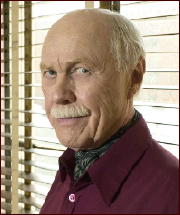
Andy’s new business neighbors are not much more stable. Under Andy’s second floor office is “Video Riotâ€, a video store run by film buff Simon who thinks of himself as Andy’s PI partner. The mall’s restaurant is “Afghan Kebabs†run by Wally an immigrant who, after 9/11, changed his name and covered his restaurant in patriotic American décor with his surveillance camera hidden in the head of a Richard Nixon bust.
The writing uses the contrast between the fictional PI lifestyle versus reality as a basis for some delightful off beat humor. For example, the cliché plot device of a time limit such as a bomb set to go off at midnight. In “Dial M For Laptop,†Andy has only until midnight to find his stolen laptop with his father-in-law’s tax return or miss the tax deadline (trust me, it’s visually funnier than it reads).
This was a bad time for NBC. The network had reached new heights in its ability to keep any possible success away from any of their series. Andy Barker, P.I. was too quirky to attract a large audience, but to set it up against events such as NCAA Final Four tournament, and very popular series such as CSI and Grey’s Anatomy was one of NBC’s dumber moves.
EPISODE INDEX:
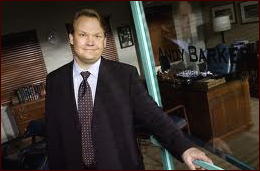
◠“Pilot†(3/22/07, Thursday 9:30-10pm) Written by Conan O’Brien and Jonathan Groff. Guest Cast: Vanessa Branch, Gary Anthony Williams, Steve Cell, and Nicole Randall Johnson
Andy Barker, CPA, opens his new business office in a small outdoor mall, but he finds himself helping a client who mistakes him for the office’s former occupant, a hardboiled PI.
Ratings: 6 share versus ABC’s Grey’s Anatomy (23), CBS’s NCAA Basketball tournament (10) and Fox’s rerun of Family Guy (5).
◠“Fairway My Lovely†(3/22/07, Thursday (9:30-10pm) Written by Alex Herschlag and Jane Espenson. Guest Cast: Peter Allen Vogt, Margaret Easley, and Nicole Randall Johnson
When Andy’s gross and massively overweight client dies on a golf course, everyone assumes it was a heart attack, except the man’s wife who hires Andy to prove the man’s mistress killed him.
Ratings: 5 share versus ABC’s Grey’s Anatomy (22), CBS’s NCAA Basketball tournament (13), and Fox’s American Dad (4).
◠“Three Days of the Chicken†(3/29/07, Thursday 9:30-10pm) Written by Gail Lerner. Guest Cast: Brian McNamara, Terry Rhoades, Ben Falcone, and Boogie.
Andy helps Wally who is being shaken down by an evil Chicken cartel.
Ratings: 4 share versus CBS’s CSI (22), ABC’s rerun Grey’s Anatomy (10), and Fox’s rerun Family Guy (5).
◠“Dial M For Laptop†(4/5/07, Thursday 10-10:30pm) Written by Chuck Tatham. Guest Cast: David Huddleston, Traci Lords, and Frank Santorelli.
Andy’s laptop is stolen when Lew’s plan to help a victim of blackmail leaves Andy unknowingly in the middle.
Ratings: 4 share versus CBS’s Shark (17) and ABC’s October Road (9).
◠“The Big No Sleep†(4/14/07, Saturday at 8-8:30pm) Written by Josh Bycel. Guest Cast: Jesse L. Martin, Nestor Carbonell, and Kim Coates.
Lew expects Andy’s help in revealing a woman to be a fraud and adulteress, but Andy has trouble at home. His baby daughter refuses to sleep until he finds her missing stuffed toy, Snowball.
Ratings: 3 share versus CBS’s Cold Case rerun (9), Fox’s Cops (6), and ABC’S Saturday Night Movie (Shark, 2004) (6)
◠“The Lady Vanishes†(4/14/07, Saturday at 8:30-9pm) Written by Jon Ross. Guest Cast: Ed Asner, Amy Sedaris, and James Hong.
Andy finds a decades old lost letter from Lew’s ex-lover claiming she was framed for the murder of her gangster lover. Andy looks into the case, leading to the return of Lew’s evil former partner, Mickey.
Ratings: 3 share versus (CBS’s Cold Case rerun (9), Fox’s second Cops (7), and ABC’S Saturday Night Movie (6).
Source for ratings: TVTango.com
